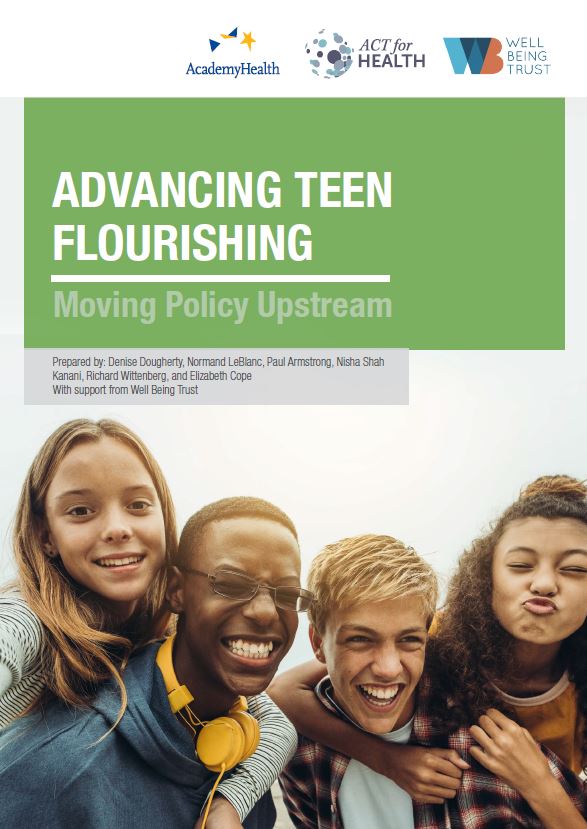
Advancing Teen Flourishing: Moving Policy Upstream
This report is based on a detailed and stepwise approach that included a review of systematic reviews of interventions and strategies, a global scan of policy recommendations, a set of key informant interviews, and a structured approach to identifying and prioritizing a unique set of action items for the U.S. context, all guided by a National Expert Panel.
Teens and researchers report multiple sources of teen stress and anxiety, from climate change, through racially-based microaggressions, pressure to get good grades, aspects of digital life, and teens’ own and peers’ family incomes. Half of America’s teens are either languishing or only moderately mentally healthy and one out of three teens is so sad and hopeless that they cannot participate in usual activities. Psychological, social, and emotional well-being can vary by race, ethnicity, gender, and gender identification.
The report’s global policy scan and evidence review found a number of strategies and policies that can help teens thrive and recommends establishing a Decade for Teen Flourishing and making investments in adolescent development equal to those for early childhood. Existing evidence is promising for social-environmental strategies such as family income supplementation, moving to better neighborhoods (for some teens), and changes in school start times; as well as direct actions that involve teens in nature, physical exercise, social media, and stress-reduction activities. There remains a need to develop and rigorously test innovations such as those that have so far worked only for younger adolescents; as well as efforts to build capacity for adults who work with teens, including parents, coaches, and professionals in health care, child welfare, and criminal justice. All endeavors should engage teens as leaders.